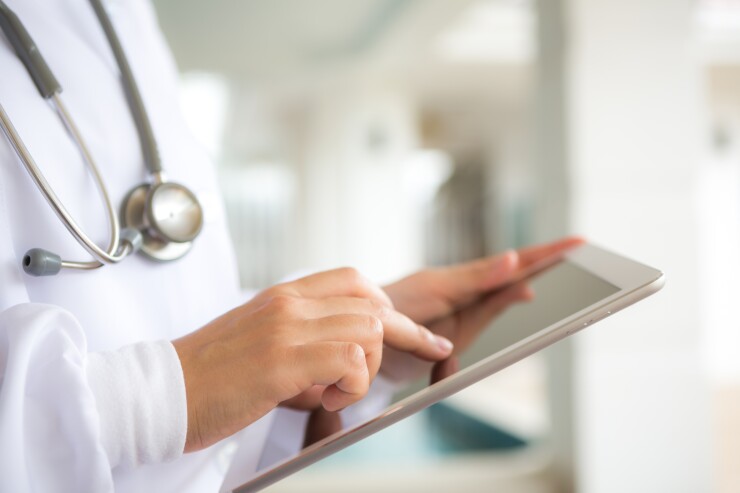A trip to the doctor's office requires a lot of forms, oftentimes collecting the same information for different purposes.
This redundancy is a clear example of where technology can offer a better experience — and consumers can drive that transformation, according to Juan Molina, vice president of strategy for CareCloud, which is working with First Data on a consumer-facing health care app called Breeze.
"Medical practices don't do a great job of collections, and we wanted to put tools in that would make the experience better, similar to ordering a car on Uber," Molina said. "Instead of handing you a clipboard, there's an app for these forms that is also part of the payments workflow."

First Data's adding a payment gateway to CareCloud's hosted health care platform in an attempt to integrate the different activities at a medical office that require forms. They will also offer a consumer-facing app, called Breeze, that will run on First Data's payment hardware, Clover Mini and Clover Station; and iOS and Android devices.
Consumers will use Breeze to set up appointments, fill out digital registration forms, enter insurance information, make payments, set up payment plans and import a preferred method of payment such as credit, debit, mobile wallet, health savings accounts, cash or check. Medical practices will licence the software, and will pay a network fee that will be based on the specific terms of the deployment.
First Data's Clover is conducive to this sort of use because it was designed as a platform that could have specialized vertical solutions build on top, said Zil Bareisis, a senior analyst at Celent.
"While a number of platforms offer additional apps such as CRM and inventory management in addition to payment acceptance for merchants, the interesting angle here is that is appears to be a set of consumer-oriented applications, turning a payments acceptance device into a customer self-service station," Bareisis said.
Technology companies
But paper processes still dominate health care, leading to calls to make it part of future
"This works on the retail end of health care, with can have a bunch of different payment points," said Chris Foskett, executive vice president of corporate and business development for First Data.
The collaboration can also boost First Data's Clover, which has recently expanded deeper into e-commerce marketing through a





